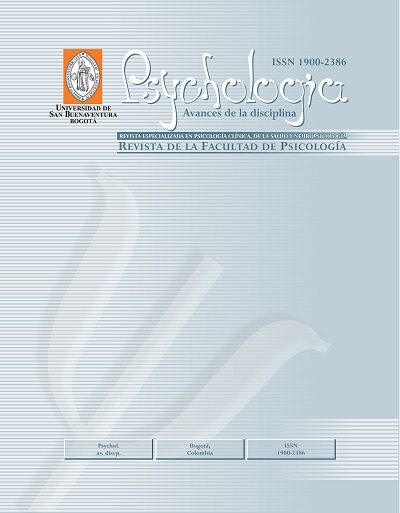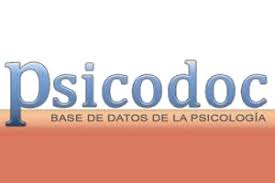This journal provides open, immediate access to its contents, based on the principle that offering the public free access to research helps to promote a higher global exchange of knowledge.
As such, all journal articles are published under a Creative Commons Attribution-NonCommercial-ShareAlike 4.0 International License (CC BY-NC-SA), by which commercial use of the original work or its possible derived works is not allowed, and the distribution thereof must be done with the same license elements regulating the original work.
http://creativecommons.org/licenses/by-nc-sa/4.0/
Abstract
Actually, the he forms of communication have changed due to the rapid evolution of the new technologies, which have been constituting a persuasive, useful and even fundamental tool, but which have also led to the execution of symbolic violence in children, Girls and adolescents. In Colombia, the phenomenon of cyberbullying has been little studied at the present time, so the objective of this study was to analyze and describe the incidence of cyberbullying through the new technologies of information and communication, examining the possible differences that may arise regarding the educational grade. The sample consisted of 1080 adolescent students from four schools in Bucaramanga and its metropolitan area (Colombia) (boys N = 437, girls N = 643). The results indicated that 17.4% and 21.8% (through the cell phone and internet, respectively) of the participants have been victims of cyberbullying at least once, in a time less than or equal to 1 month, for most victims. In addition, the results indicate that, with regard to the cell phone, there were no significant differences in the presentation of cyberbullying according to the educational grades studied while, in terms of internet, the only differences found have to do with aggression of harassment in the sixth grade and the violation of intimacy violation in the tenth grade.
Keywords:
References
Amemiya, I., Oliveros, M., Condorimay, Y., Oliveros, R., Barrientos, A., & Rivas, B. E. (2013). Ciberbullying en colegios privados y estatales de primaria en dos distritos de Lima Metropolitana. Anales de la Facultad de medicina, 74(2), 91-96. doi: 10.3109/01460862.2012.708215. 5.
Avilés, J.M. (2009). Ciberbullying. Diferencias entre el alumnado de secundaria. Boletín de Psicología, 96, 79-96.
Avilés, J.M. (2013). Análisis psicosocial del ciberbullying: claves para una educación moral. Papeles del Psicólogo, 34(1), 65-73.
Bauman, S. (2010). Cyberbullying in a rural intermediate school: An exploratory study. Journal of Early Adolescence, 30, 803–833.
Buelga S, Cava, M. J., & Musitu, G. (2010). Cyberbullying:
victimización entre adolescentes a través del teléfono móvil y de Internet. Psicothema, 22, 784-789.
Buelga, S., & Pons, J. (2012). Agresiones entre Adolescentes a través del Teléfono Móvil y de Internet. Psychosocial Intervention, 21(1), 91-10. doi: 10.5093/in2012v21n1a2
Cabra, F. & Marciales, G.P. (2012). Comunicación electrónica y cyberbullying: Temas emergentes para la investigación e intervención socioeducativa. Psicología desde el caribe, 29(3), 707-730.
Cava, M.J. Buelga, S., Musitu, G. y Murgui, S. (2010). Violencia escolar entre adolescentes y sus implicaciones en el ajuste psicosocial: un estudio longitudinal. Revista de Psicodidáctica, 15(1), 21-34.
Campbell, M. A. (2005). Cyberbullying: An old problem in a new guise? Australian Journal of Guidance and Counselling, 15, 68-76. Recuperado de http://eprints.qut.edu.au/1925/1/1925.pdf
Chaux, E.; Molano, A. & Podlesky, P. (2009). Socio-economic, socio-political and socio-emotional variables explaining school bullying: A country-wide multilevel analysis. Aggressive Behavior, 35, 520-529.
Chaux, E. (2011). Múltiples Perspectivas Sobre un Problema Complejo: Comentarios Sobre Cinco Investigaciones en Violencia Escolar. PSYKHE, 20(2), 79-86
Correa, E., & Cervantes, M. (2012). Jóvenes, educación y nuevas tecnologías. Universidad Autónoma de Baja California.
Cuevas, M. C. (2006). Exposición a violencia, conductas parentales y afrontamiento en niños y adolescentes (Tesis de Doctorado). Universidad de Granada. Granada: España.
Doucette, J.D. (2013). Gender and Grade Differences in How High School Students Experience and Perceive Cyberbullying. (Tesis de Maestría), Western University. Recuperado de http://ir.lib.uwo.ca/cgi/viewcontent.cgi?article=2529&context=etd
Félix, V., Soriano, M., Godoy, C., & Sancho, S. (2010). El ciberacoso en la enseñanza obligatoria. Aula Abierta, 38(1), 47-58.
Garaigordobil, M., & Oñederra, J. A. (2010). La violencia entre iguales: Revisión teórica y estrategias de intervención. Madrid: Pirámide.
Garaigordobil, M. (2011). Prevalencia y consecuencias del cyberbullying: una revisión. International Journal of Psychology & Psychological Therapy, 11(2), 233-254. doi: 10.3916/C44-2015-17.
Hernández, R., Fernández, C., & Baptista, P. (2010). Metodología de la investigación. México, DF: McGraw-Hill Interamericana
Hoyos, O., Aparicio, J., & Córdoba, P. (2005). Caracterización del maltrato entre iguales en una muestra de colegios de Barranquilla (Colombia). Psicología desde el Caribe. Universidad del Norte, 16, 1-28.
Hoff, D.L., & Mitchell, S.N. (2009). Cyberbullying: Causes, effects, and remedies. Journal of Educational Administration, 47(5), 652-661.
Keith, S., & Martín, M. E. (2005). Cyber-Bullying: Creating a culture of respect in a Cyber World. Reclaiming Children and Youth, 13, 224-228.
Kowalski, R.M., Limber, S.P., & Agatston, P.W. (2012). Cyberbullying: Bullying in the Digital Age. Nueva York: Wiley
Lanzillotti, A., & Korman, G. (2014). Cyberbullying, características y repercusiones de una nueva modalidad de maltrato escolar. Acta Psiquiátrica y Psicológica de América Latina, 60(1), 34-40.
Lapidot-Lefler, N., & Dolev-Cohen, M. (2015). Comparing cyberbullying and school bullying among school students: prevalence, gender, and grade level differences. Soc Psychol Educ, 18, 1-6. DOI 10.1007/s11218-014-9280-8
León del Barco, B., Castaño, M.E., Fajardo, F. & Gómez, T.M. (2012). Cyberbullying en una muestra de estudiantes de Educación Secundaria: variables moduladoras y redes sociales. Electronic journal of research in educational psychology, 10(27), 771-788
Marciales, G. P., & Cabra, F. (2011). Internet y pánico moral: revisión de la investigación sobre la interacción de niños y jóvenes con los nuevos medios. Universitas Psychologica, 10(3), 855-865.
Martínez, M.A. (2013). Análisis psicosocial del ciberbullying: claves para una educación moral. Papeles del psicólogo, 34(1), 65-73. doi:10.1177/0013124508316039.
Mishna, F., Khoury-Kassabri, M., Gadalla, T., & Daciuk, J. (2012). Risk factors for involvement in cyber bullying: Victims, bullies and bully–victims. Children and Youth Services Review 34, 63-70.
Monks, C.P., Smith, P.K., Naylor, P., Barter, C., Ireland, J.L., & Coyne, I. (2009). Bullying in different contexts: Commonalities, differences and the role of theory. Aggression and Violent Behavior, 14(2), 1359-1789. doi:10.1016/j.avb.2009.01.004
Olweus, D. & Limber, S. P. (2010). Bullying in school: Evaluation and dissemination of the Olweus Bullying Prevention Program. American Journal of Orthopsychiatry, 80, 124-134.
Ortega, R., Calmaestra, J., & Mora, J. (2008). Cyberbullying. International Journal of Psychology and Psychological Therapy, 8(2), 183-192. doi: 10.1089/cyber.2012.0040
Paredes, O.L., Sanabria-Ferrand, P.A., González-Quevedo, L.A., & Moreno, S.P. (2010). “Bullying” en las facultades de medicina colombianas, mito o realidad. Revista de Medicina, 18(2), 161-172.
Redondo, J., Luzardo, M., & Rangel, K. (2016). Ciberagresión: un estudio sobre la prevalencia en estudiantes universitarios colombianos. Informes Psicológicos, 16(1), 85-99.
Roberts, C., Freeman, J., Samdal, O., Schnohr, C.W., de Looze, M. E., Gabhainn, N. S., Iannotti, R., Rasmussen, M. and International HBSC Study Group. (2009). The Health Behaviour in Schoolaged Children (HBSC) study: methodological developments and current tensions.
International Journal of Public Health, 54(2), 140–50.
Slonje, R. & Smith, P.K. (2008). Cyberbullying: Another main type of bullying. Scandinavian Journal of Psychology, 49, 147-154. doi: 10.1027/0044-3409.217.4.227
Slonje, R. (2011). The nature of cyberbullying in Swedish schools: Processes, feelings of remorse by bullies, impact on victims and age and gender differences. Unpublished PhD thesis, Goldsmiths, University of London, UK.
Smith, P., Mahdavi, J., Carvalho, M., & Tippett, N. (2006). An investigation into cyberbullying, its forms, awareness and impact, and the relationship between age and gender in cyberbullying. Research Brief. Recuperado de http://www.northampton.ac.uk/behaviour2learn/Lists/Downloads/67-rbx03-06.pdf
Smith, P. K, Mahdavi, J., Carvalho, C., Fisher, S., Russell, S., & Tippett, N. (2008). Cyberbullying: Its nature and impact in secondary school pupils. Journal of Child Psychology and Psychiatry, 49, 376-385. doi: 10.1111/j.1469-7610.2007.01846.x.
Spiegel, A. (2007). Nuevas tecnologías saberes, amores y violencias. Buenos Aires: Editorial Noveduc.
Tarapdar, S. & Kellett, M. (2011). Young people’s voices on cyber bullying: what can age comparisons tell us. London: Diana Award
Tokunaga, R.S. (2010). Following you home from school: A critical review and synthesis of research on cyberbullying victimization. Computers in Human Behavior, 26, 277-287. doi:10.1016/j.chb.2009.11.014.
Vandebosch, H., & Van Cleemput, K. (2009a). Cyberbullying among youngsters: Profiles of bullies and victims. New Media & Society 11(8), 1349-1371.
Vandebosch, H., & Van Cleemput, K. (2009b). Defining Cyberbullying: A Qualitative Research into the Perceptions of Youngsters. CYBERPSYCHOLOGY & BEHAVIOR, 11(4), 499-503.
Wang, J., Ionnotti, R.J., & Nansel, T.R. (2009). School bullying among adolescents in the United States: Physical, verbal, relational, and cyber. Journal of Adolescent Health, 45, 368–375.
Werner, N.E., Bumpus, M.F., & Rock, D. (2010). Involvement in internet aggression during early adolescence. Journal of Youth and Adolescence, 39(6), 607-619.
Willard, N.E. (2006). Cyberbullying and Cyberthreats: Responding to the challenge of online social cruelty, threats and distress. Eugene, Oregon: Center for Safe and Responsible Internet Use.
Willard, N.E. (2007). The authority and responsibility of school offi cials in responding to cyberbullying. Journal of Adolescent Health, 41(6), S64-S65.
Williams, K., & Guerra, N. (2007). Prevalence and predictors of Internet bullying. Journal of Adolescent Health, 41, 14-21. doi: 10.1016/j.jadohealth.2007.08.018
Ybarra, M.L., & Mitchell, K.J. (2004). Online aggressor/targets, aggressors, and targets: A comparison of associated youth characteristics. Journal of Child Psychology and Psychiatry, 45, 1308-1316.
Ybarra, M.L., & Mitchell, K.J. (2007). Prevalence and frequency of Internet harassment instigation: implications for adolescent health. Journal of Adolescent Health, 41, 189-195. doi:10.1016/j.jadohealth.2007.03.005.





















